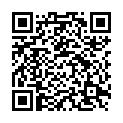|
|
|
| Module code: E2613 |
|
|
5P (5 hours per week) |
|
5 |
| Semester: 6 |
| Mandatory course: yes |
Language of instruction:
German |
Assessment:
Project work
[updated 08.01.2020]
|
E2613 (P211-0123) Electrical Engineering and Information Technology, Bachelor, ASPO 01.10.2018
, semester 6, mandatory course, technical
|
75 class hours (= 56.25 clock hours) over a 15-week period.
The total student study time is 150 hours (equivalent to 5 ECTS credits).
There are therefore 93.75 hours available for class preparation and follow-up work and exam preparation.
|
Recommended prerequisites (modules):
None.
|
Recommended as prerequisite for:
|
Module coordinator:
Prof. Dr. Xiaoying Wang |
Lecturer: Prof. Dr. Xiaoying Wang
[updated 10.09.2018]
|
Learning outcomes:
In this module, students will work together in a group on a project to design a more complex electronic system. In doing so, they will apply the knowledge acquired in lectures to carry out a design task from the specification of requirements to a functional sample. For this purpose, they will independently design the necessary electronic circuits and test them in simulations. They will compile, interpret and evaluate the results obtained. Students will plan their implementation on the printed circuit board and create the layout using EDA software. To do so, they must apply their knowledge of enclosure, assembly and connection technology in order to obtain a working sample that can be metrologically tested in the lab. In addition to practical skills in manufacturing electronic circuits and using measuring instruments, students will practice presenting and discussing their solutions in their group during project development.
[updated 08.01.2020]
|
Module content:
Practical work on topics in the laboratory from the areas of general electronics, microelectronics, transmission technology and control technology.
[updated 08.01.2020]
|
Teaching methods/Media:
Templates and task sheets in electronic form, PC, projector, Spice-based simulation tools (PSPICE or LTSpice), Eagle layout tool, VHDL simulator.
[updated 08.01.2020]
|
Recommended or required reading:
Best, Roland: Phase-Locked Loops, Design, Simulation and Applications, McGraw-Hill, 2007 Beuth, Klaus: Elektronik: Band 2: Bauelemente, Vogel, (latest edition) Brückner, Volker: Optische Nachrichtentechnik, Grundlagen und Anwendungen, Vieweg, 2003 Hayward, Wes H.: Introduction to Radio Frequency Design, Amer Radio Relay League, 1982 Heinemann, Robert: PSPICE, Hanser, (latest edition) Krups, Robert: SMT-Handbuch, Vogel, 1991 Lee, Thomas H.: The Design of CMOS Radio-Frequency Integrated Circuits, Cambridge University Press, 2003, 2nd Ed. Leibner, Peter: Rechnergestützter Schaltungsentwurf, Krehl, Münster, 1996, 1. Aufl. Mandl, Matthew: Priciples of Electronic Communications, Prentice Hall, 1973 Nolde, Ralf: SMD-Technik, Franzis, 1994 Paul, Reinhold: Einführung in die Mikroelektronik, Hüthig, 1985 Reichl, Herbert: Hybridintegration, Hüthig Stephens, Donald R.: Phase-Locked Loops for Wireless Communications, Kluwer Strauss, Rudolf: SMD Oberflächenmontierte Bauteile, VTT, 1989 Tietze, Ulrich; Schenk, Christoph: Halbleiterschaltungstechnik, Springer, (latest edition)
[updated 08.01.2020]
|


